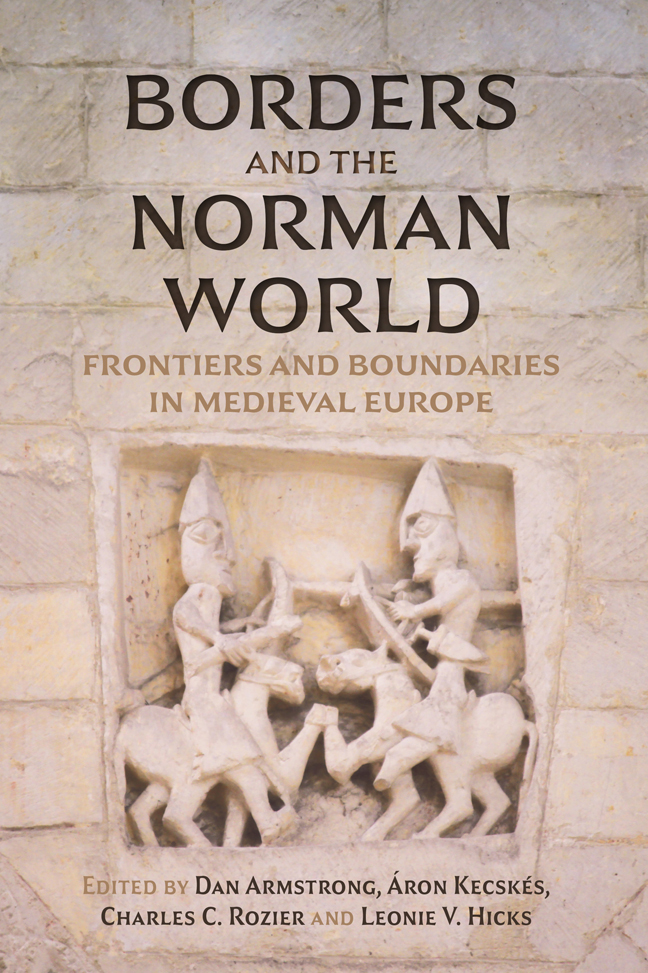Book contents
- Frontmatter
- Contents
- List of Illustrations
- List of Contributors
- Acknowledgements
- List of Abbreviations
- Naming Conventions
- Maps
- Introduction: Writing the Borders of the Norman World
- Part I Borders in and Around the Norman World
- Part II Ecclesiastical Borders
- Part III Conceptual Boundaries
- Afterword: Borders, Landscapes, and Seascapes
- Select Bibliography
- Index
7 - ‘…a mari Barensi usque ad mare Bononiense’: Crossing Borders. The Travels of Archbishop Anselm of Canterbury, libertas ecclesiae, and the Uses of Clerical Mobility in an Age of Reform
Published online by Cambridge University Press: 22 February 2024
- Frontmatter
- Contents
- List of Illustrations
- List of Contributors
- Acknowledgements
- List of Abbreviations
- Naming Conventions
- Maps
- Introduction: Writing the Borders of the Norman World
- Part I Borders in and Around the Norman World
- Part II Ecclesiastical Borders
- Part III Conceptual Boundaries
- Afterword: Borders, Landscapes, and Seascapes
- Select Bibliography
- Index
Summary
‘Holy Mary!’: The Archbishop in the Cistern
One Night In June 1098, during Duke Roger Borsa of Apulia's siege of Capua, the English monk and historian, Eadmer of Canterbury, awoke suddenly when he heard someone nearby shout in distress. Eadmer, who was accompanying Archbishop Anselm during his travels through the Italian peninsula, had been asleep in a small, deserted church at some distance from the siege operations, and his first thought, and that of the others alarmed by the shout, was for his archbishop's safety. Near the little church was a deep cistern that was only partially covered and when Anselm, then in his mid sixties, had inevitably been obliged to get up in the middle of the night to relieve himself, he inadvertently tumbled into the water tank, crying ‘Holy Mary!’ as he fell. Seeing the archbishop at the bottom of the cistern, Eadmer and his companions feared the worst, but Anselm looked up, smiling to reassure them that he was unhurt.
Even today travelling remains a potentially hazardous enterprise and it was even more so in the Middle Ages, as Archbishop Anselm clearly discovered in the summer of 1098. Given the abundant evidence of long-distance land and sea travel in the Middle Ages, undertaken by religious missionaries, merchant adventurers, warriors, explorers, pilgrims, many ordinary women and men, and even elderly archbishops, few now would still associate mobility exclusively with modernity. The study of medieval mobility has developed markedly with a growing number of publications in recent decades on the significance of travel and the experiences of medieval travellers. In addition, the recognition of a mobile medieval population has contributed to the increasingly influential idea of a ‘Global Middle Ages’. This historiographical development is, in part, a response to the ‘mobility’ and ‘spatial’ turns in other disciplines such as sociology, geography, philosophy and, especially, migration studies. For the sociologist John Urry and others, ‘mobility systems’, that is the panoply of technologies and social relationships of all kinds that enable people, material objects, and ideas to move, are transformative, shaping not only society at large, but also personal identity. Discussions of mobility necessarily include consideration of phenomena that impede, restrict, or otherwise influence movement: borders and frontiers are among these phenomena. However they are understood, frontiers and borders only become visible when someone, or something, attempts to move through them.
- Type
- Chapter
- Information
- Borders and the Norman WorldFrontiers and Boundaries in Medieval Europe, pp. 171 - 200Publisher: Boydell & BrewerPrint publication year: 2023



